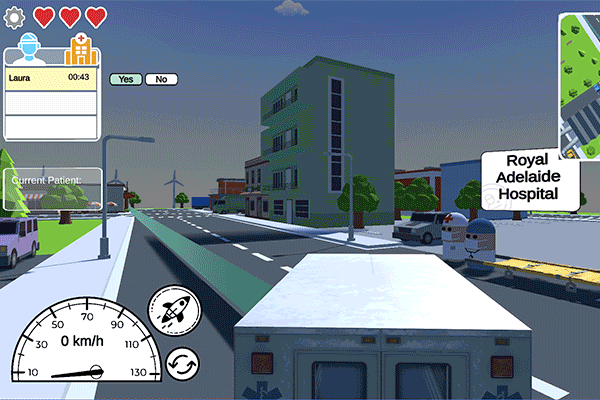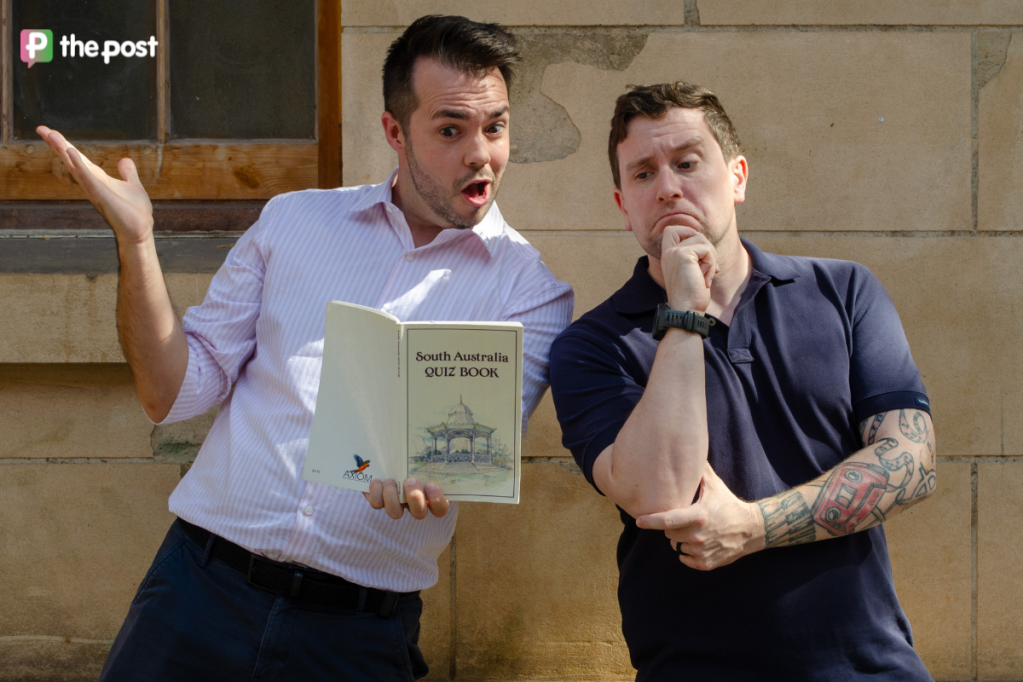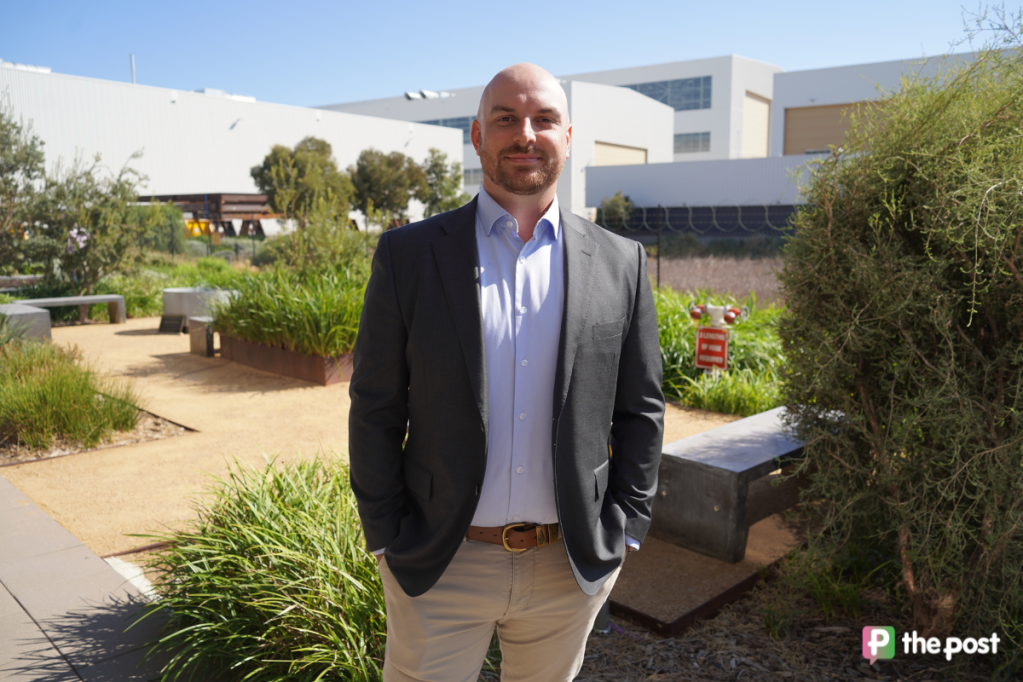What if South Australia’s ramping crisis was a video game? Now it is
A new game puts you in the shoes of a paramedic scrambling around Adelaide to pick up ailing patients – and delivers some food for thought along the way.

Video games set in Adelaide are a rare find. Aside from sports titles that feature Adelaide Oval or the 1996 PlayStation edition of Formula 1 where you can drive around the old Adelaide street circuit (this writer’s personal favourite), you’re hard pressed to find much gaming content set in the City of Churches.
But a new online game developed by a group of postgraduate students at the University of South Australia puts a spotlight on Adelaide and its number one health and political issue: ramping.
Called Ramping Rush: Ambulance Rescue!, the single-player game gives you an ambulance to drive around Adelaide and a mounting number of triple zero calls to respond to. Each patient is categorised as low, medium or high risk and comes with a countdown clock. Failure to drop them at the hospital before time runs out will cost you a life. Three failures and the game ends.
Easy enough, right?

It starts off simple: one patient, “Noah”, calls with flu symptoms and a high fever. He is the only patient calling for an ambulance, so InDaily picks him up and drops him at the Royal Adelaide Hospital. Job done.
Then another patient, “Leo”, has had a minor fall at work and needs an ambulance within 70 seconds. No problem, we promptly pick him up and offload him at the Flinders Medical Centre (in Ramping Rush world, the FMC and RAH are conveniently only a few streets apart).
You might like

But it doesn’t take long for what seems like a simple game to devolve into a mad rush.
Problems pile onto problems. Patients with higher acuity and shorter timeframes pop up on your to-do list. Meanwhile, the patient you’re delivering to hospital can’t get in because the Lyell McEwin is at capacity, leaving you ramped and unable to respond to other calls.
The game then devolves into some kind of animated dystopian hellscape with roblox-like characters in need of medical attention strewn across the streets with at-capacity hospitals unable to take them.

The game inevitably ends as a third patient waits too long for you to respond. A screen flashes up showing how many patients you managed to help. InDaily hasn’t been able to do better than six after dozens of attempts.
[Play the game: Ramping Rush: Ambulance Rescue!]
The stressful gameplay mirrors a situation that has played out countless times in South Australia’s health system. This September, 35.5 per cent of priority two triple zero callers – i.e. needing an ambulance within 16 minutes – were not seen to within the required timeframe.
Stay informed, daily
Dr Ben Stubbs, a senior lecturer in journalism and creative writing at UniSA and leader of the Ramping Rush project, said the game is an attempt to inform younger audiences who might not consume traditional news sources about ambulance ramping.
“Ramping is in the news just about every day, and in terms of getting a young person to actually play that, it allows them to step into the ambulance, to drive those streets, to have that chaos going on with ambulance beds, the routes to the different hospitals, to the different patients they had to pick up, and for that decision making to be part of the game that they were playing,” Stubbs said.
“There is a subtlety there that when someone walks away from it, they might have an appreciation of ramping and the chaos and the complexity that maybe they didn’t have beforehand.”
Stubbs said the game – developed over six months by a team of computer science and media and literature students within UniSA’s Australian Research Centre for Interactive and Virtual Environments – is targeted at kids between 10 and 14 years old.
“They might not read InDaily or they might not look at the nightly news, but there is I think a responsibility to make them aware of what’s going on in the world,” he said.
“This is a way for them to appreciate something that is real and has an impact on potentially them and their families and the cities that they live in.”
The game also presents regular players with frustrations that are perhaps insightful about problems in our healthcare system.
For example, numerous patients call for issues that could be better dealt with by a GP or an urgent care clinic, and the hospital bed capacity makes the game exceptionally difficult (the RAH has only two beds and the FMC and Lyell McEwin have one each).

“It’s designed so that you can never win,” Stubbs said – you can only beat your own personal best drop offs.
“And we did this on purpose because this is a live issue, because this is an issue that hasn’t found a conclusion or an outcome yet.
“And this was part of us kind of building in that journalism narrative as well is that this is something that’s ongoing, that despite changes and updates that this is something that is continually being dealt with.
“And so, subtely, we hope that this is something that then game players can reflect on that and say ‘okay, this is not something that happened 15 years ago’.
“This is something that is happening now and will happen again next week and probably next year as well.”








